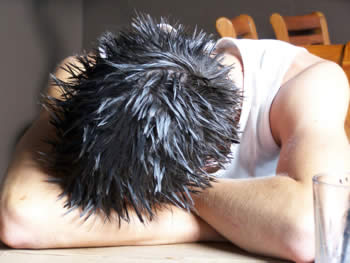Phobias
Many phobias can respond readily to a variety of therapies, even where they may have been causing severe disruption to an individual’s life for many years.
If this page does not contain the information you are searching for, please go to our ‘Contact Us‘ page to request personal help. We regret we are unable to advice on medical matters.
What are phobias?
A phobia is an excessive or unreasonable fear of an object, place or situation.
Simple phobias are fears of specific things such as insects, infections, flying.
Agoraphobia is a fear of being in places where one feels “trapped” or unable to get help, such as in crowds, on a bus, or standing in a queue.
A social phobia is a marked fear of social or performance situations.
Phobias are extremely common. Sometimes they start in childhood for no apparent reason; sometimes they emerge after a traumatic event; and sometimes they develop from an attempt to make sense of an unexpected and intense anxiety or panic (e.g. “I feel fearful, therefore I must be afraid of something”).
When the phobic person actually encounters, or even anticipates being in the presence of the feared object or situation, s/he experiences immediate anxiety. The physical symptoms of anxiety may include a racing heart, shortness of breath, sweating, chest or abdominal discomfort, trembling, etc. and the emotional component involves an intense fear – of losing control, embarrassing oneself, or passing out.
Commonly people try to escape, and then to avoid the feared situation wherever possible. This may be fairly easy if the feared object is rarely encountered (e.g. fear of snakes) and avoidance will not therefore restrict the person’s life very much. At other times (e.g. agoraphobia, social phobia) avoiding the feared situation limits their life severely. Escape and avoidance also make the feared object/situation more frightening.
With some phobias the person may have specific thoughts which attribute some threat to the feared situation. This is particularly true for social phobia where there is often a fear of being negatively evaluated by others, and for agoraphobia when there may be a fear of collapsing and dying with no one around to help, or of having a panic attack and making a fool of oneself in front of other people.
There are many successful treatments for phobias, including conventional medication, herbal remedies, psychotherapy, hypnotherapy, EFT, TFT and NLP (you can find out more about these therapies elsewhere in the site).
With some phobias there may be accompanying frightening thoughts (this plane might crash; I’m trapped; I must get out). However with other phobias it is more difficult to identify any specific thoughts which could be associated with the anxiety (e.g. it is unlikely that a spider phobic is afraid of making a fool of themselves in front of the spider). With these phobias the cause seems to be explained more as a conditioned (learned) anxiety response which has become associated with the feared object.
Treatments for phobias and fears
There are many successful treatments for phobias, including conventional medication, herbal remedies, psychotherapy, hypnotherapy, EFT, TFT and NLP (you can find out more about these therapies elsewhere in the site). Sometimes, profound results can be achieved in just one session, even where the phobia has been entrenched for many years and having a far-reaching effect on an individual’s life. Sometimes it can take a few sessions but it is rare indeed that some beneficial change cannot be made.
It is not an unusual situation that a phobia is not actually a phobia at all, but instead is a severe fear. The distinction is important, for severe fear – which will feel and ‘behave’ just like a phobia – is far more easy to deal with and can often be resolved in one or two E-therapy sessions or telephone work, by a variety of methods.
Here’s a ‘rough and ready’ way to tell the difference. Think about ‘your’ phobia for a moment; then see how much would you have to be paid to voluntarily encounter the phobic object/situation – think carefully about the amount of money we are talking about here:
1. £1,000?
2. £10,000
3. £100,000?
4. £1,000,000?
5. £10,000,000?
6. No amount of money would be enough?
If you answered ‘yes’ to possibility number 6, then you probably DO have a phobia. If you answered ‘yes’ to any of the amounts of money, then you probably have a fear, the severity of which can be judged by the amount you would have to be paid. Of course, some people are not tempted hugely by money, when this test ‘falls down’ but you get the idea. In general, if there is anything that could persuade you to ‘face’ the phobia, then you are likely to be able to set yourself free from it far more readily than otherwise.
If you have a phobia or a ‘£10,000,000’ fear, then face-to-face work is indicated; otherwise, it is likely that telephone work or ‘E therapy’ will be effective. It is impossible to accurately predict the number of sessions here, although improvement would normally felt quite early on.
There is another possibility, though… some apparent phobias (especially Emetophobia – the fear of vomit and vomiting) are actually symptoms of obsessive compulsive disorder and without doubt need face-to-face therapy if effective relief is to be found. Cognitive Behavioural Therapy (CBT) or Neuro Linguistic Programming (NLP) can be immensely successful here.
How can I tell? Well, again, here is a rough and ready guide. Generally speaking, the phobic response is only fully triggered in the presence of the phobic situation or object; thinking about it might cause unease but no intolerable discomfort. With obsession, however, the situation is different, in that the individual will continually check, throughout waking hours, to see if the phobic situation or trigger present. This continual checking usually leads to a conviction that it IS present and the phobic response ensues. Hence the sufferer of Emetophobia checks how he she feels immediately upon waking and at frequent intervals throughout the day, especially after eating or drinking anything. Most days, there will be at least one surge of anxiety, and probably more, when this ‘testing’ engenders nausea.








